The 1980s weren’t just about big hair, loud music, and neon colors, though those certainly defined the decade’s flashy exterior. Beneath all that glamorous excess were countless small, intimate moments that somehow captured the essence of what it meant to be alive during those transformative years. These weren’t the moments that made headlines or ended up in time capsules, but rather the quiet instances that revealed the hopes, anxieties, and simple pleasures that shaped an entire generation’s experience.
Looking back now, it’s often these understated moments that feel most authentic and meaningful, the ones that transport us instantly back to a time when the world felt both more innocent and more hopeful than it does today. They remind us that behind all the decade’s surface-level spectacle was a deeper story about people navigating change, embracing new possibilities, and finding connection in an increasingly complex world. Here are twelve quiet moments that somehow managed to capture the entire spirit of the 1980s in their gentle simplicity.
1. Waiting by the Radio with a Blank Cassette Tape
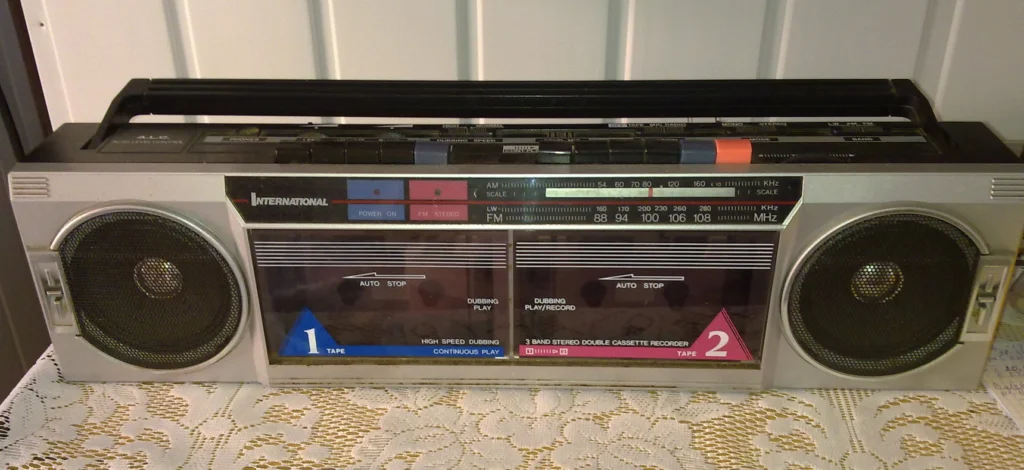
There was something almost sacred about sitting by your boom box with a finger poised over the record button, waiting for your favorite song to come on the radio. The anticipation was everything – you’d already written the artist and song title on the cassette label in your best handwriting, creating a permanent artifact of your musical taste and patience. This wasn’t just about getting free music; it was about participating in a ritual that connected you to something larger, a shared cultural moment happening simultaneously in bedrooms and kitchens across the country. HowStuffWorks untangles the ribbon of mystery behind tape recording worked exactly.
The quiet concentration required for this task felt meditative in a way that streaming music could never replicate, demanding a level of attention and commitment that made each successfully recorded song feel like a small victory. You learned to live with the DJ’s voice cutting into the beginning or end of tracks, accepting these imperfections as part of the authentic experience rather than flaws to be eliminated. Those homemade mixtapes became time capsules of specific moments in your life, each song forever linked to the exact circumstances under which you captured it from the airwaves.
2. The Glow of a VHS Rental Store on a Friday Night
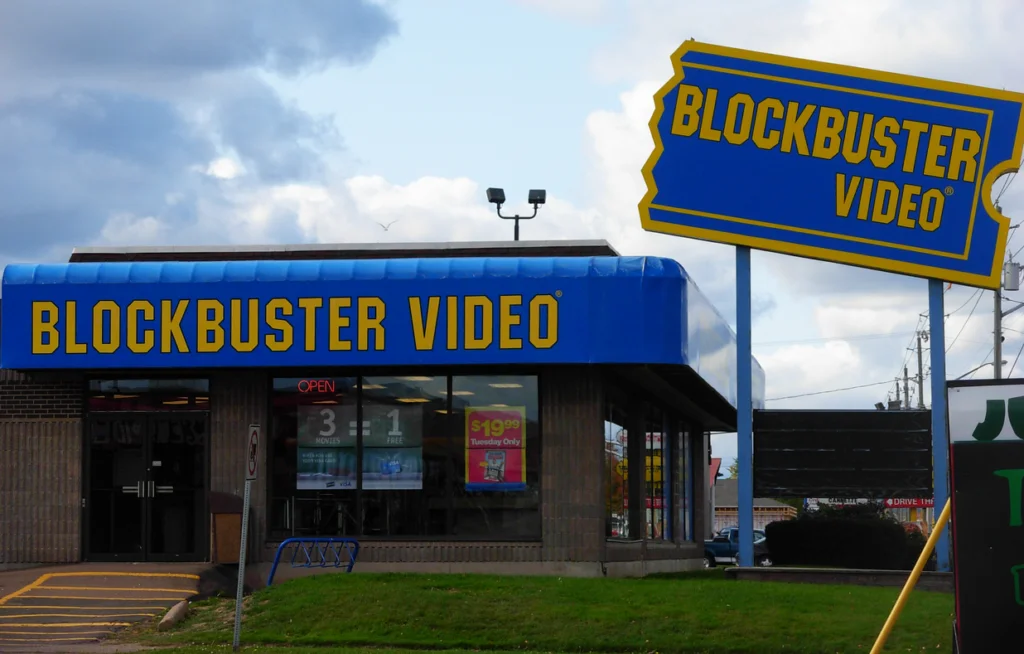
Walking into a video rental store on Friday evening felt like entering a temple of possibility, with endless rows of colorful VHS boxes promising two hours of escape from whatever had happened during the week. The soft fluorescent lighting and the gentle hum of the air conditioning created an atmosphere of calm anticipation as families wandered the aisles, negotiating what everyone could agree to watch together. There was something deeply democratic about the process – everyone got to lobby for their choice, and the final selection often represented a compromise that brought people together rather than apart. ScreenCrush reveals that Blockbuster is making something of a comeback, albeit an unorthodox one.
The ritual of checking the back of the box, reading plot summaries, and examining the freeze-frame images on the cover became a form of entertainment in itself, a way of extending the movie-watching experience before it even began. Store employees became trusted advisors whose recommendations carried real weight, and regular customers developed relationships that went beyond simple transactions. The commitment required – driving to the store, making a selection, remembering to return it on time – made each movie feel more significant than something you might casually stream today.
3. Sitting in a Mall Food Court Watching People
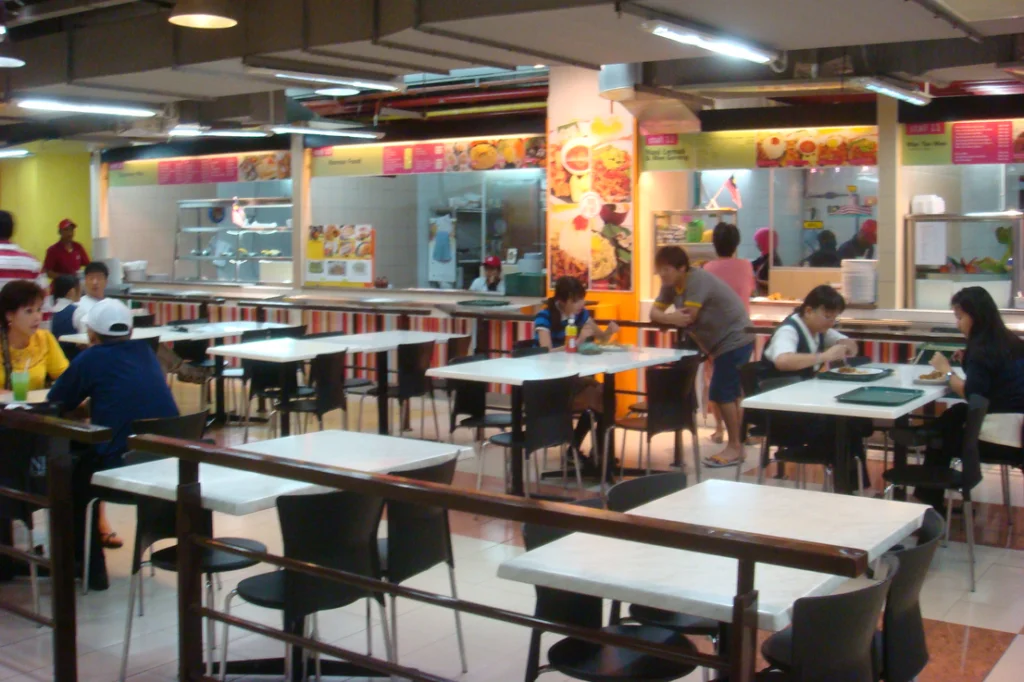
The mall food court in the 1980s served as America’s unofficial town square, a place where people from different backgrounds naturally congregated without any particular agenda beyond eating and observing. You could sit there for hours with a slice of pizza or a soft pretzel, watching the endless parade of humanity flow past in their best casual wear and carefully feathered hair. The food court represented a kind of democratic mixing that felt uniquely American – teenagers on dates, families with young children, elderly couples sharing an Orange Julius, all occupying the same space with remarkable harmony. According to CNN, the American mall is getting something of a makeover.
The gentle background noise of conversation, clinking utensils, and distant music from various stores created a soothing urban lullaby that made the food court feel like a refuge from the pressures of daily life. People seemed more patient then, more willing to linger and observe rather than rushing through every experience in pursuit of the next thing. Those quiet moments of people-watching taught an entire generation about the rich diversity of American life, offering glimpses into different worlds and ways of being that broadened perspectives simply through passive observation.
4. The Saturday Morning Cartoon Ritual
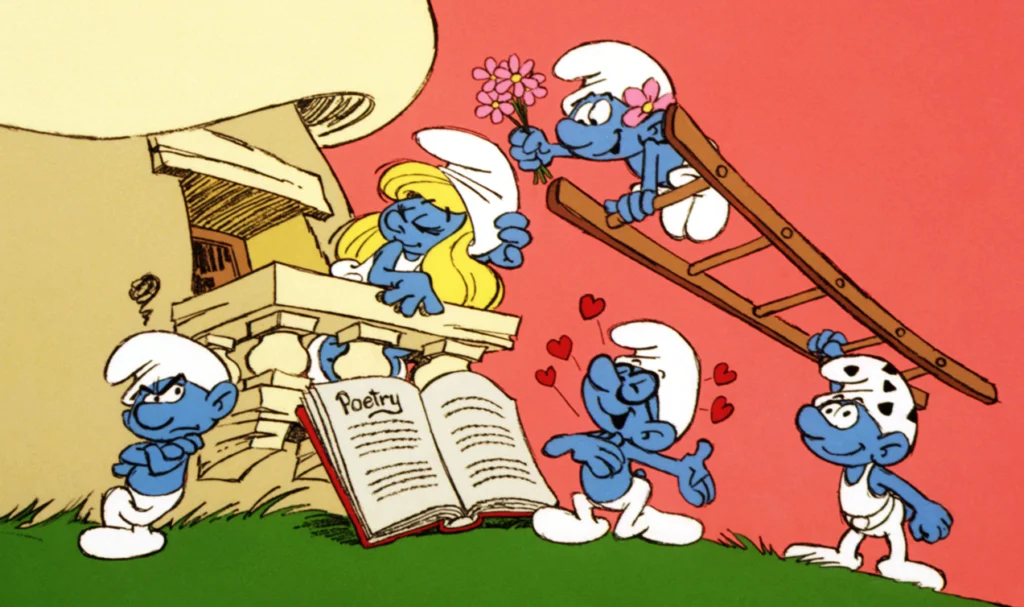
Saturday mornings in the 1980s had an almost religious quality, beginning with the gentle awakening to the knowledge that an entire day of freedom stretched ahead without homework or responsibilities. The routine was as important as the content – tiptoeing to the living room so as not to wake sleeping parents, carefully adjusting the TV volume to that perfect level between audible and too loud, settling into your favorite spot with a bowl of sugary cereal. This wasn’t just about watching cartoons; it was about claiming a few precious hours of autonomy in a week otherwise structured by adult demands and expectations.
The progression from early morning educational shows to the more exciting adventure cartoons created a natural rhythm that felt both comforting and energizing, building toward the crescendo of the best shows right around mid-morning. Between programs, you’d see commercials for toys you desperately wanted, breakfast cereals that promised prizes inside the box, and upcoming shows that gave you something to anticipate for next Saturday. The entire experience fostered a sense of belonging to a larger community of kids all engaged in the same ritual, sharing the same references and excitement about characters and storylines that adults simply couldn’t understand.
5. Driving at Night with the Windows Down

There was something magical about driving through empty suburban streets late at night with the windows rolled down, the radio playing softly, and nothing but streetlights and the occasional porch light breaking the darkness. The air felt different then – cleaner somehow, less complicated – and the simple act of moving through space at a leisurely pace provided a kind of meditation that cleared away the accumulated stress of daily life. These weren’t destination-driven trips but rather aimless wanderings that served no purpose beyond the pure pleasure of movement and solitude.
The soundtrack to these nocturnal journeys often came from whatever was playing on the radio, creating random associations between songs and specific stretches of road that would last for decades. You might find yourself driving past the same houses week after week, developing a silent familiarity with their inhabitants through glimpses of lit windows and the rhythms of their evening routines. These quiet drives represented a kind of freedom that felt both rebellious and innocent, a way of claiming independence without actually going anywhere or doing anything that parents might find objectionable.
6. Waiting for Photos to Be Developed

The anticipation between dropping off a roll of film and returning to pick up the developed pictures created a unique form of delayed gratification that made every photograph feel precious and significant. You’d return to the photo counter with genuine excitement, never quite sure what memories would emerge from that envelope or how successfully you’d captured the moments you’d tried to preserve. The ritual of flipping through fresh prints, sometimes discovering shots you’d completely forgotten taking, turned the simple act of looking at pictures into a form of time travel.
The imperfections – blurry shots, unexpected photobombs, pictures where someone blinked – became part of the story rather than failures to be deleted, creating a more honest and complete record of actual experience. Sharing photos meant physically handing them to people, watching their reactions in real time, and often leaving copies behind as gifts that recipients would treasure in ways that digital images rarely achieve. The entire process taught patience and made each successful photograph feel like a small miracle rather than an expected outcome.
7. The Last Day of School Afternoon

That final afternoon of the school year carried a unique quality of light and possibility, as if the very air had been transformed by the promise of months of unstructured time stretching ahead like an endless summer highway. Walking out of the building for the last time until fall felt ceremonial, a crossing from one phase of life into another that was marked not by grand gestures but by the simple act of stepping into sunshine with an empty backpack. The familiar hallways and classrooms that had defined your daily existence for nine months suddenly felt foreign and temporary, already becoming memories even as you moved through them one final time.
The conversations with friends took on a different quality, mixing excitement about summer plans with the subtle melancholy of knowing that everyone would be slightly different when you reunited in the fall. Teachers seemed more relaxed and human, sharing smiles and well-wishes that revealed the affection that had been professional necessity to keep hidden during the school year. The afternoon stretched ahead with no homework, no deadlines, no obligations beyond whatever adventures you and your friends might dream up before dinner time called you home.
8. Dialing Someone’s Number from Memory
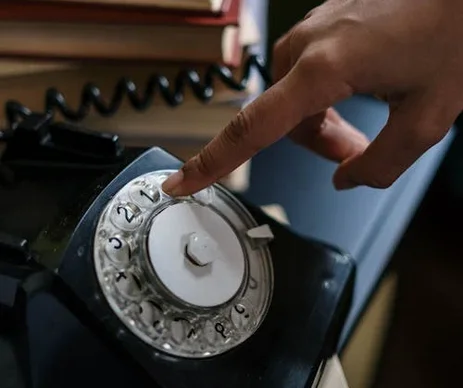
Before speed dial and contact lists, calling someone required the intimate act of physically dialing their number, a sequence of digits you’d memorized through repetition and genuine connection. The rotary dial demanded patience and precision, while push-button phones made the process faster but no less deliberate, each number a conscious choice that demonstrated your investment in reaching that particular person. There was something deeply personal about carrying someone’s phone number in your head, a form of mental real estate that you reserved for people who truly mattered in your life.
The sound of the phone ringing on the other end created suspense and anticipation that text messages and instant communication could never replicate, a moment of uncertainty about who might answer and what mood they might be in. Busy signals meant waiting and trying again later, adding an element of persistence and patience to human connection that made successful conversations feel more valuable. The entire ritual of phone calls – from dialing to the eventual goodbye – required a commitment of time and attention that made each conversation feel more significant than the quick exchanges that would later replace them.
9. Browsing in a Bookstore Without Buying Anything

Independent bookstores in the 1980s welcomed browsing as a legitimate activity, creating spaces where people could spend hours exploring ideas and stories without any pressure to make a purchase. The musty smell of paper and ink, combined with the quiet rustling of pages being turned by fellow browsers, created an atmosphere of intellectual exploration that felt both stimulating and peaceful. Running your fingers along book spines, reading first paragraphs, and discovering unexpected treasures became a form of entertainment that enriched the mind even when your wallet remained closed.
Bookstore employees and owners often seemed more like curators than salespeople, happy to discuss literature and make recommendations based on genuine enthusiasm rather than commercial interest. The physical act of holding books, comparing different editions, and reading random passages created connections between reader and text that online browsing could never replicate. These unhurried explorations often led to discoveries that shaped reading habits and intellectual development in ways that targeted searches and algorithmic recommendations simply cannot achieve.
10. The Quiet Moment Before a House Party Started
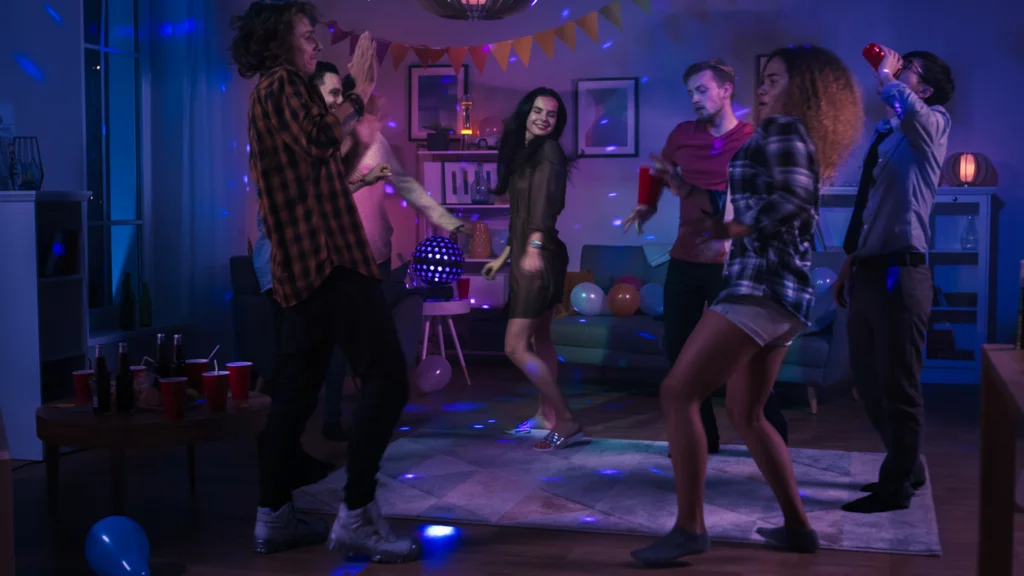
Those few minutes before guests arrived at a house party held a special kind of anticipation, when everything was perfectly arranged and full of potential but hadn’t yet been touched by the chaos of actual celebration. The host would do one final check of the music, the snacks, and the overall atmosphere, experiencing that brief moment of pride in creating something that would bring people together. The house felt transformed – furniture moved to accommodate dancing, lighting dimmed to create ambiance, and every surface cleaned and prepared for the memories that were about to be made.
Standing in that perfectly prepared space, you could almost hear the laughter and conversation that would soon fill every room, visualizing how the evening might unfold and hoping that everyone would have the kind of good time that would be remembered fondly for years to come. The doorbell’s first ring would shatter this peaceful moment, launching the event into motion, but those quiet minutes beforehand represented pure possibility and generous intention. The effort invested in creating the right environment for human connection demonstrated a care and thoughtfulness that made ’80s social gatherings feel more intentional and meaningful than many modern equivalents.
11. Watching TV with Your Family After Dinner
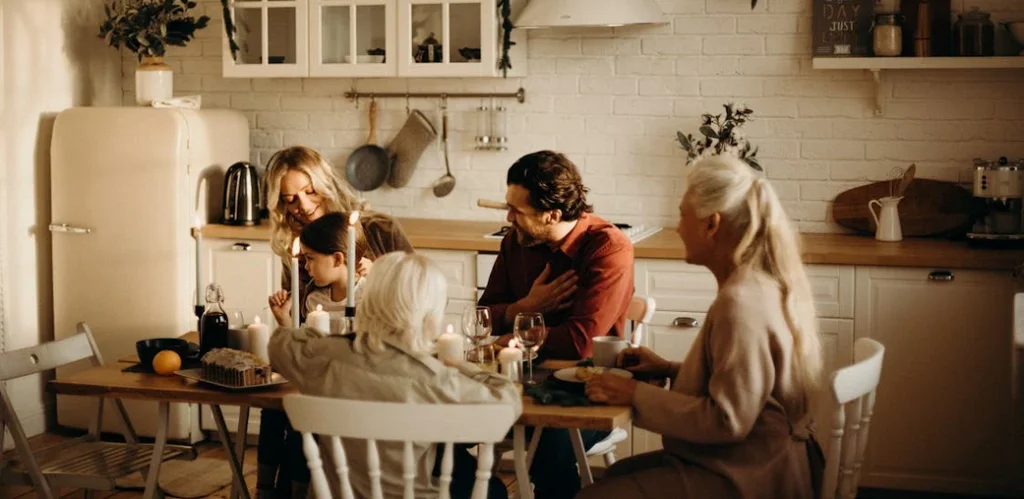
Before everyone had their own screens and entertainment options, families naturally gathered around the single television set after dinner, negotiating what to watch through a democratic process that required compromise and consideration. The ritual began with clearing the dinner table and continued through the gentle settling into favorite spots on the couch or floor, remote control battles resolved through either parental authority or sibling diplomacy. These weren’t planned family bonding sessions but rather organic moments of togetherness that happened simply because there were fewer alternatives competing for individual attention.
The shared experience of watching the same program created instant common ground for conversation, jokes, and commentary that strengthened family bonds through accumulated shared references and memories. Commercial breaks provided natural opportunities for conversation, snack runs, or brief discussions about what was happening on screen, weaving family interaction seamlessly into entertainment consumption. Even when family members had different preferences for shows, the act of being physically present in the same space while something played created a form of parallel companionship that fostered closeness without requiring constant interaction.
12. The Sunday Afternoon Nap

Sunday afternoons in the 1980s often carried a drowsy quality that seemed to slow time itself, creating natural opportunities for the kind of restorative rest that busy weekday schedules rarely allowed. Whether it was dozing off while reading the Sunday paper, falling asleep during a baseball game on TV, or simply lying down because there was nothing urgent that demanded attention, these impromptu naps felt like a luxury rather than a necessity. The guilt-free nature of Sunday afternoon sleep reflected a cultural understanding that rest was not only acceptable but necessary for maintaining balance in increasingly busy lives.
The quality of Sunday afternoon light – softer and more golden than other times of the week – seemed designed to encourage this kind of peaceful downtime, filtering through windows to create the perfect environment for drifting off without fully intending to sleep. Waking up from these unplanned naps often brought a moment of disorientation followed by the pleasant realization that you still had hours of weekend remaining to enjoy. These spontaneous periods of rest represented a form of self-care that felt natural and unforced, a way of honoring the body’s rhythms and the soul’s need for periodic restoration.
These twelve moments might seem unremarkable when described individually, but together they paint a picture of a decade that valued patience, genuine connection, and the simple pleasure of being present in the moment. The 1980s, for all their reputation for excess and materialism, also fostered a kind of mindful living that happened naturally rather than being pursued as a conscious goal. People had fewer options for distraction, which paradoxically created more opportunities for the kind of quiet reflection and human connection that many of us now have to work much harder to achieve. Looking back at these gentle moments, we can see how they shaped an entire generation’s understanding of what it meant to be content with simple pleasures and present-moment awareness. They remind us that some of life’s most meaningful experiences don’t announce themselves with fanfare or demand our attention through notifications, but rather emerge quietly in the spaces between more dramatic events, waiting patiently for us to notice their quiet wisdom and lasting value.


